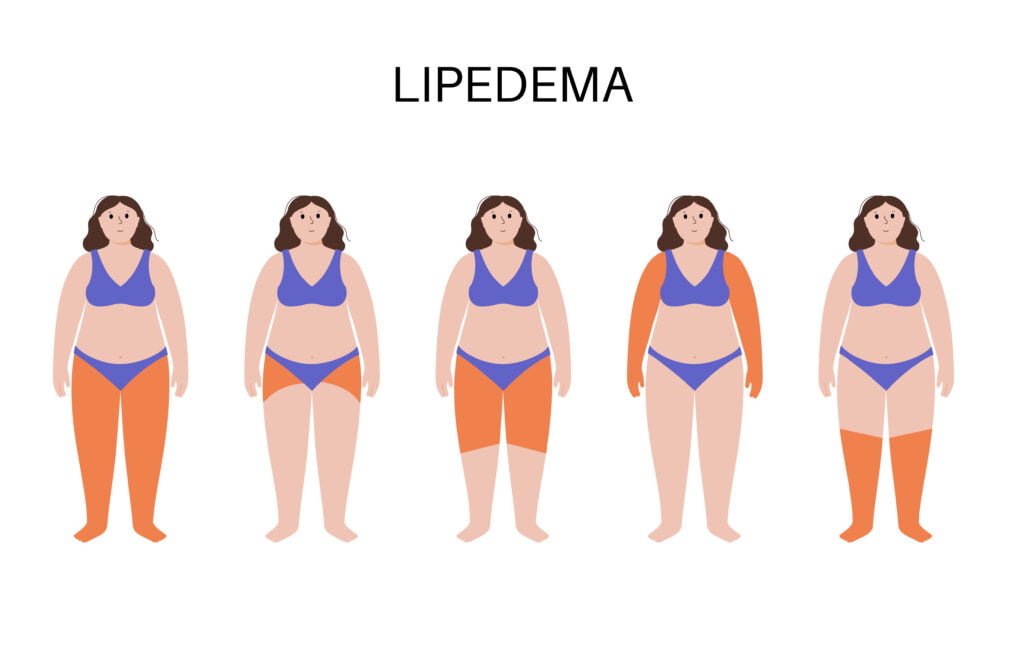
Lipedema and pregnancy: If a person has lipedema and is hoping to have a baby
Avinav
September 11, 2023

Lipedema is a chronic, progressive disease that causes swelling, pain, and a “pear-shaped” body due to abnormal fat accumulation in the lower limbs.
Lipedema can potentially have implications during pregnancy and postpartum. If someone has lipedema and is planning to expand their family, there are several factors to consider and steps they can take to manage their condition:
Here are some key points to remember for lipedema and pregnancy:
- Consult with Healthcare Providers: It’s essential to have open discussions with both an obstetrician/gynecologist and a specialist familiar with lipedema before and during pregnancy. These healthcare professionals can provide guidance on managing the condition during this time.
- Lifestyle Management: Maintaining a healthy lifestyle before and during pregnancy can help manage the effects of lipedema. This includes maintaining a balanced diet, staying physically active within the limits advised by your healthcare provider, and managing weight gain. If one notices a rapid progression of lipedema, it may be prudent to get rid of the fat to stall or slow down the speed of progression before pregnancy. However, the other option is to undergo WAL 6 months to 1 year after delivery.
- Compression Garments: Wearing compression garments, especially those designed for pregnancy, can help reduce swelling and discomfort associated with lipedema. Consult with a healthcare provider to determine the appropriate type and level of compression.
- Hydration and Nutrition: Staying well-hydrated and consuming a diet rich in nutrients can help support overall health and may mitigate some of the symptoms of lipedema during pregnancy.
- Prenatal Care: Regular prenatal check-ups are essential for monitoring both the health of the mother and the developing baby. Make sure to discuss your lipedema with your obstetrician to ensure they are aware of your condition and can provide appropriate care.
- Exercise and Mobility: Engaging in gentle and appropriate exercises can help improve circulation and alleviate discomfort associated with lipedema during pregnancy. Consult with a physical therapist or healthcare provider to determine suitable exercises.
- Pain Management: If you experience pain or discomfort related to lipedema during pregnancy, discuss pain management strategies with your healthcare provider. Some pain relief options are safer during pregnancy than others, so it’s important to follow medical advice.
- Postpartum Care: After giving birth, it’s important to continue working with your healthcare providers to manage any changes or challenges that may arise due to lipedema. Gradual resumption of physical activity and consideration of postpartum compression garments may be recommended.
- Psychological Support: Pregnancy and the postpartum period can be emotionally challenging, particularly for individuals with a pre-existing condition like lipedema. Seek emotional support if needed, through friends, family, support groups, or counseling.
- Breastfeeding Considerations: If you choose to breastfeed, you may need to adjust your approach to accommodate any mobility or discomfort issues associated with lipedema. Consult with healthcare providers to ensure your comfort and well-being.
- Pain management
- Regular Exercise
- Psychological Support
- Lifestyle management
- Hydration and Nutrition
- Use compression garments
Conclusion
Remember that every individual’s experience with lipedema during pregnancy can be different, and the guidance you receive should be tailored to your specific situation. Working closely with a team of healthcare professionals will help ensure a healthy and well-supported pregnancy journey.
To connect with us click on the button below
To know more fill in the details below:
Recent Posts
Have Any Question?
Lipedema is a condition that causes excess fat to accumulate in the lower part of the body.
- +919515106591
- srinageshlipedema@gmail.com



